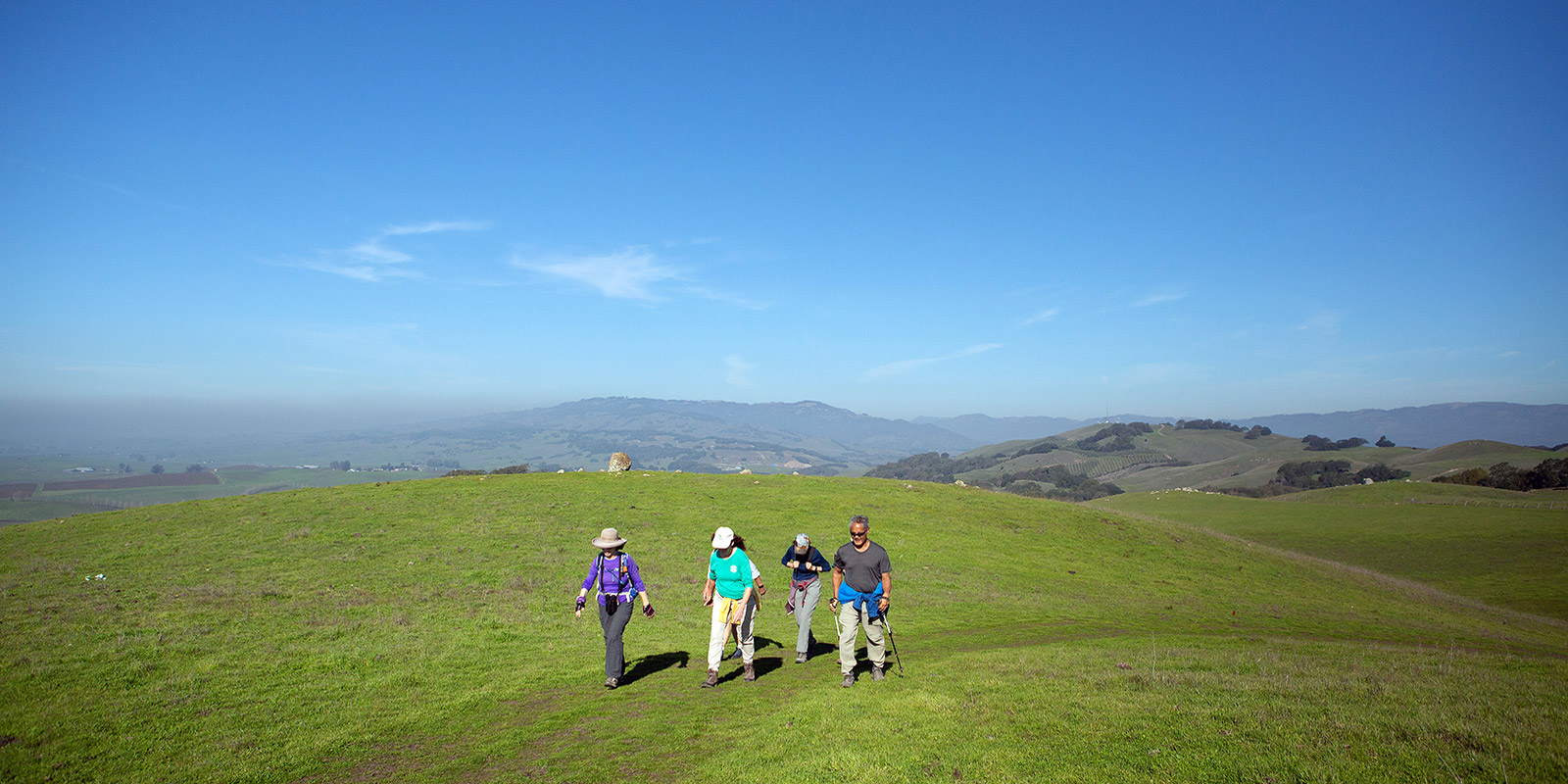Hiking at Tolay Lake Regional Park
Tolay Lake Regional Park features nearly 12 miles of trails across mostly open grasslands and ridgetops about 8 miles southeast of Petaluma. From the hilltops, visitors can see San Pablo Bay, the Petaluma River, the San Francisco skyline and other Bay Area peaks.

West Ridge Trail leads to views
On the West Ridge Trail, you don’t have to be an advanced hiker to reach panoramic views. Unlike the strenuous hikes required at parks like Hood and Taylor mountains, Tolay's West Ridge features a moderate climb to views of the Petaluma River, San Pablo Bay and the San Francisco skyline.
The new extension stretches the West Ridge Trail more than 4 miles one way from the park center, making for a round-trip hike of nearly 9 miles. So, while the ascent isn’t steep, the journey is long. You can turn back at any point, but the true end of the West Ridge Trail is worth the effort.
The final 2 miles take you into the Tolay Creek Ranch addition to the park. The land makes up the southern half of the park, and at the end of the trail, you are treated to an expansive view of the San Pablo Baylands, Cougar Mountain, Sears Point, and East Bay and San Francisco landmarks. In spring, the lush, rolling hills are unforgettable.

Don’t miss the east ridge or valley floor
Like the West Ridge Trail, the East Ridge Trail also offers a moderately easy 2.5-mile climb to a vista point with bay views. And the Historic Lakeville Road Trail rivals both in a completely different setting. It meanders through the valley, ending at the pillars of a historic stone gate on either side of the trail. Shaded areas along the trail offer a peaceful place to rest beneath trees as cows saunter by.

Birds and wildlife abound
No matter which trail you choose, you're likely to see wildlife. Wooded groves and sunken marshes in the valley’s floor serve as home to waterfowl, amphibians, lizards, turtles and more. Black beetles work tirelessly, red-tailed hawks float effortlessly, coyotes pause to make eye contact with you before sprinting away. Chirping crickets serenade you. Families of deer munch on vegetation.
Natural rock outcroppings, particularly on the western ridge, provide habitats for squirrels, burrowing owls and lizards. The park’s woodlands and groves provide acorns, seeds, fruits, and cover for nesting for a variety of birds and mammals.
Raptors are abundant at Tolay Lake Regional Park. Hawks, owls, kites, kestrels, and golden eagles hunt from above as the wide open expanse offers the perfect setting for airborne assaults.
Cultural and natural history
At 3,400 acres, Tolay Lake is one of the largest of Sonoma County's regional parks. It is named for the seasonal lake that forms in the valley between its hillsides during the rainy season and dries down in warm weather.
The park is known for its Native American history and is a spiritual center and cultural landscape for the Federated Indians of Graton Rancheria, who are comprised of Coast Miwok and Southern Pomo tribal citizens. Coast Miwok people are the original descendants of the Tolay Valley. The Federated Indians of Graton Rancheria are the county's partners in co-managing the park and stewarding the cultural and natural resources.
Plan your visit

This property has been ranched since the 1800s, and grazing continues as a way to manage vegetation. The cows at Tolay seem much more afraid of humans than humans need be of them. See these tips for sharing trails with cattle.
Hiking at Tolay Lake Regional Park is a unique experience, and with a master plan that calls for an eventual 30 miles of trails, a gathering area, hike-in camp sites, a visitor center and bunkhouse, outdoor classrooms, equestrian amenities, new picnic areas and more (as funding becomes available), Tolay will have many more experiences to offer.
The park does not have drinking water, so be sure to bring your own. Most trails are on open grassland, and the lack of shade means they're best explored in spring, winter and fall or during early mornings and late evenings in the summer.
Parking is $7 or free for Regional Parks members.
This post was written by Janelle Wetzstein, a former Sonoma County Regional Parks marketing specialist.
Published in 2018. Updated in 2023.


 Translate
Translate